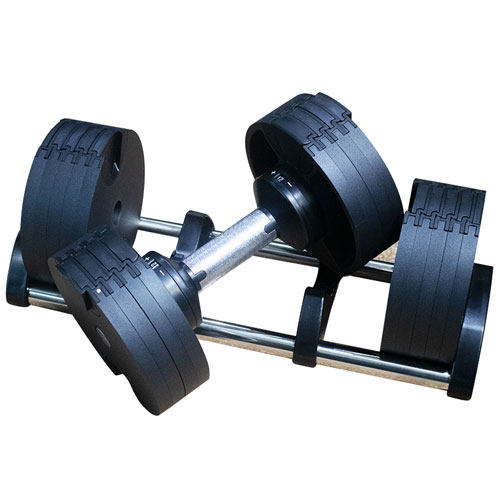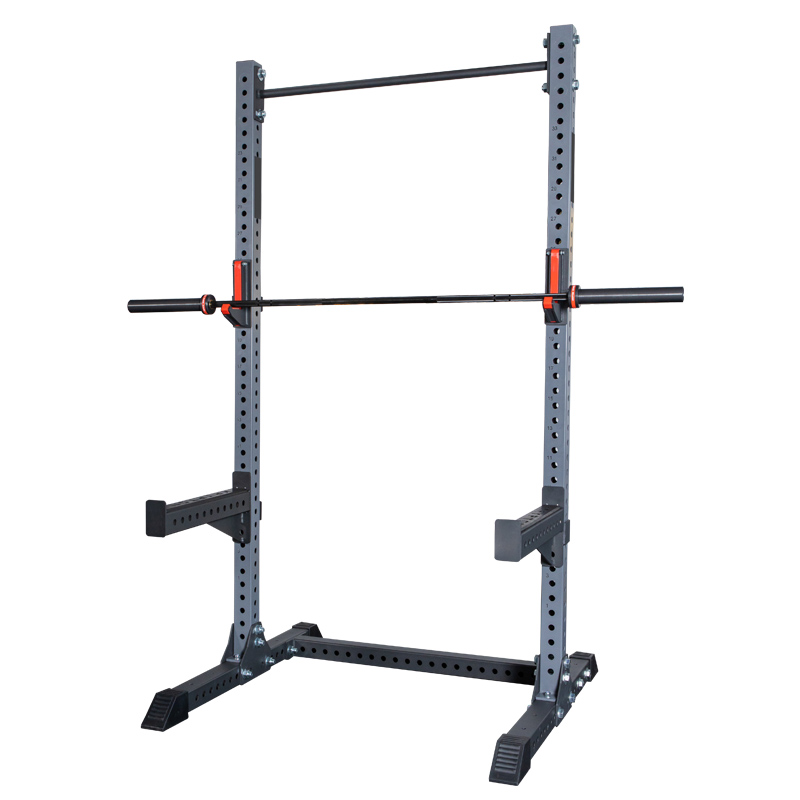How to Choose the Right Weight Plate Storage for Your Gym

A well-organized gym isn’t just about having the right equipment – it’s about how you store that equipment. Proper weight plate storage can make all the difference in terms of both aesthetics and functionality. When weight plates are neatly stored, it creates a safer environment, preventing unnecessary accidents caused by cluttered spaces. Moreover, proper storage not only boosts the overall efficiency of your gym but also saves valuable time, allowing gym-goers to focus on their workouts rather than hunting for the right plates or tripping over scattered weights. Whether you're setting up a home gym or managing a larger commercial space, selecting the right weight plate storage solution is crucial to maintaining an organized, efficient, and safe workout area.
Assessing Your Gym Space
Before choosing the perfect weight plate storage solution, it’s essential to assess your available space. The storage system you choose will directly depend on the layout of your gym and the amount of space you have for plates. Is your gym compact or spacious? Are you dealing with a tight corner or an open floor plan? Understanding these dimensions will help narrow down your choices. For smaller spaces, you may need to prioritize compact storage options that don’t overcrowd the room. Larger spaces, on the other hand, might offer more flexibility with freestanding racks or multiple storage units.
Consider the layout too. Make sure the storage system is positioned where users can easily access and return plates without causing interruptions in their workout flow. Proximity to the squat rack, bench press, or deadlift platform is vital, as these are areas where plates are frequently swapped in and out. To ensure you're choosing the right solution, measuring your space is key. Take accurate measurements of the area where you intend to place your storage and allow for sufficient clearance around the storage units for smooth movement and accessibility.
Types of Weight Plate Storage Systems
When it comes to choosing the right weight plate storage, there are several options, each catering to different needs and gym setups. Here are some of the most popular systems:
Wall-mounted racks: These are an excellent space-saving option, particularly for small or home gyms where floor space is limited. Wall-mounted racks keep plates off the ground and offer easy access. However, they may require drilling into walls, so ensure your gym’s walls are suitable for this kind of installation.
Freestanding weight plate racks: These offer flexibility, as they don’t need to be attached to the wall and can be moved around easily. Freestanding racks are a good choice for gyms that require a mobile solution or have a lot of weight plates that need to be stored in a centralized location.
Vertical vs. horizontal storage: Vertical storage systems have plates stacked upright, which is ideal for saving floor space. However, they might not be as easy to load and unload. Horizontal storage systems, on the other hand, allow plates to be laid flat in a row, making them more accessible, but they can take up more space. Deciding between these two options depends on how much room you have and how often you plan to access the plates.
Weight plate trees and stands: These are classic and functional options for compact gyms. The plate tree design allows for a neat, organized storage solution, with plates stacked in a circular arrangement. These are ideal for smaller quantities of plates and are easy to move if needed.
Material and Durability Considerations
Choosing durable materials is essential for ensuring your weight plate storage lasts over time. Weight plates can be quite heavy, so the storage system must be built to handle significant weight without bending or breaking.
Steel storage racks: Steel is a popular choice for weight plate storage due to its strength and durability. Steel racks can support a significant amount of weight and typically come in various finishes, from matte to chrome. However, they can be more expensive than other materials.
Plastic storage racks: While not as durable as steel, plastic storage racks can still serve their purpose in lighter-use environments, such as home gyms. They are often more affordable but may wear down faster with heavy use.
Rubberized storage racks: Some storage solutions come with rubberized surfaces or padding to protect both the weight plates and the storage system. This is particularly useful for protecting your gym floor from damage and providing extra grip for plates.
In addition to material considerations, pay attention to the possibility of rust and wear, especially with steel storage systems. Look for powder-coated finishes or galvanized steel to help protect your storage from corrosion over time.
Weight Plate Capacity and Size
One of the most crucial factors in choosing the right weight plate storage system is capacity. How many weight plates do you need to store? A system that can hold only a few plates won’t work for a busy gym, while a system designed for a heavy load may be overkill for a smaller setup.
Matching storage capacity with your weight plate collection: Consider how many plates you have now, and project how your collection might grow in the future. It’s better to have extra capacity than to purchase a system that fills up too quickly.
Plate size compatibility: Different weight plates come in various sizes, with standard plates typically being smaller in diameter than Olympic plates. If your gym uses both standard and Olympic-sized plates, you’ll need a storage system that can accommodate both types.
Future upgrades: Many gym owners invest in more weight plates over time. Be sure that your storage solution can handle additional plates without overcrowding or causing safety issues.
Design and Aesthetic Preferences
Beyond functionality, the design of your weight plate storage plays a crucial role in the overall aesthetic of your gym. The storage system should blend seamlessly with the gym’s theme and layout, whether it’s sleek and modern or industrial and rugged.
Choosing a design that complements your gym: Consider how the storage solution will fit in with the rest of your equipment. Will it match the style of your other gym equipment, or will it stand out as a feature? Some gyms prefer minimalist designs, while others opt for bold, industrial looks.
Sleek vs. industrial designs: Sleek designs are often more refined, with smooth lines and clean finishes. They work well in modern home gyms or boutique-style fitness centers. Industrial designs, on the other hand, are typically more rugged, with exposed metal and raw finishes, and are perfect for powerlifting.
Ease of Use and Accessibility
The ease of access is one of the most important factors in choosing the right weight plate storage system. No one wants to waste time struggling to load or unload plates, especially in the middle of a workout.
Loading and unloading ease: The storage system should allow users to quickly and easily access the plates without causing unnecessary interruptions. Systems that stack plates too high or require complicated maneuvers are less than ideal.
Height and accessibility for all users: Consider the height of the storage and how accessible it will be for people of different heights and strength levels. Choose racks or trees that make it easy for everyone to load and remove plates without straining or risking injury.
Budget-Friendly vs. Premium Storage Solutions
When choosing weight plate storage, it’s essential to find a balance between cost and quality. While high-end storage systems may offer superior materials and design, budget-friendly options can still be effective in smaller or home gyms.
Budget-friendly options: If you’re working with a tight budget, look for storage systems that provide the most value for your money. Many affordable options offer durable materials and good capacity, although they might lack premium finishes.
Premium storage systems: Premium weight plate storage systems often come with advanced features, such as heavy-duty construction, enhanced durability, and sleek designs. These are perfect for larger commercial gyms or serious athletes who need a more durable and long-lasting solution.
Maintaining Your Weight Plate Storage
Proper maintenance is key to ensuring your weight plate storage remains functional and lasts for years.
Routine care: Keep your storage system clean and free of dust, rust, or wear. Regularly inspect the system for any signs of damage or instability, especially if it’s holding heavy plates.
Cleaning and protection: Wipe down metal surfaces to prevent corrosion, and ensure rubberized parts are free from debris. If your storage system is made of wood, treat it periodically to prevent warping or cracking.
Replacement and upgrades: Over time, storage systems may need to be replaced or upgraded. If your plates have outgrown the system or the storage is showing signs of wear, consider investing in a new system that better suits your needs.
Conclusion: Finding the Perfect Weight Plate Storage for Your Gym
Choosing the right weight plate storage for your gym is more than just a matter of functionality – it’s about creating a safe, efficient, and aesthetically pleasing workout space. By assessing your space, understanding the types of storage systems available, and considering your unique needs, you can find the perfect solution. Whether you opt for a budget-friendly or premium option, ensure the storage you select is easy to use, durable, and aligned with your gym’s design. The right weight plate storage can transform your gym, making it more organized, accessible, and ready for any workout challenge.





